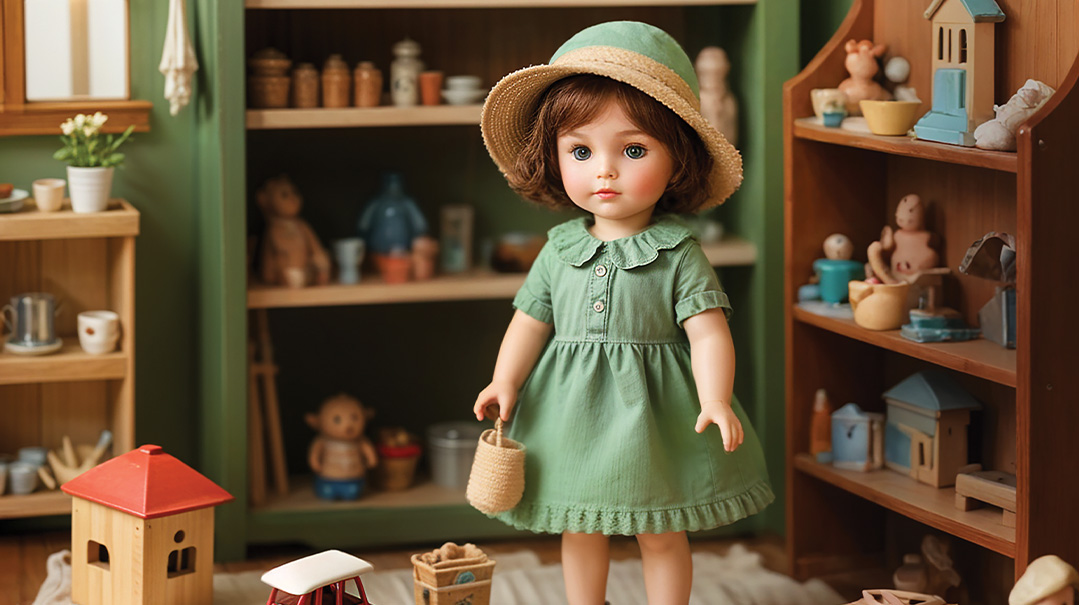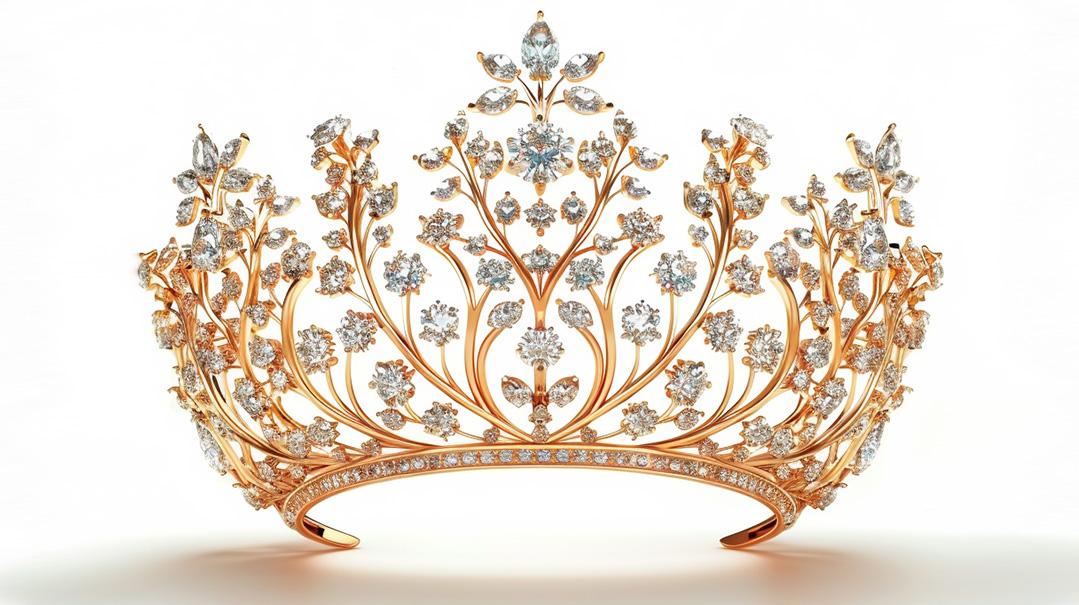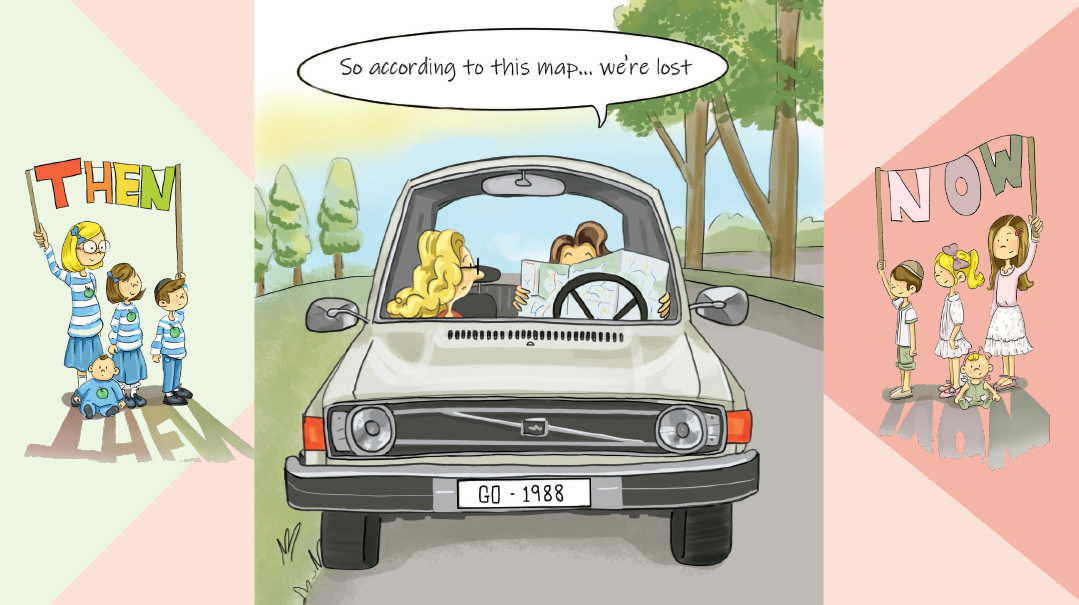REMEMBERING THE REBBETZIN
| June 15, 2011Before the Bobover Rebbetzin a”h passed away, she gave a rare personal interview for Family First, opening up about everything from her mishpachah to her thoughts about the klal today
I had the honor of visiting the Bobover Rebbetzin a”h a while ago in her Boro Park home for a rare personal interview. At the time, I had no idea that my article would serve as a tribute to this wise and selfless woman, the esteemed Rebbetzin Hessie Halberstam a”h.
Inside Her Home
It feels like yesterday that I was welcomed into the Rebbetzin’s lovely house. Elegantly dressed for her nightly simchah drop-ins, the Rebbetzin added some finishing touches to an array of fresh pastries and drinks neatly prepared on the table.
I was graciously invited to take a seat, but I hesitated — I knew that these immaculate dining room chairs each had a history. The Rebbetzin proceeded to show me which one belonged to her much-admired late husband, Grand Rabbi Naftali Tzvi Halberstam the fourth Bobover Rebbe (1931–2005).
While the Rebbetzin took a phone call, my gaze fell upon the pretty framed tapestries and paintings that adorned the walls. Tucked into the corners of each one were photos of the Rebbe ztz”l. His gentle expression and smiling eyes cloaked the home in serenity.
When the Rebbetzin married into the noble Bobover dynasty, she was known to have embraced her husband’s minhagim and lifestyle, faithfully following the Bobover kehillah with every move — from West Side Manhattan to Crown Heights to Boro Park. She returned to her parents’ (Rav Yosef Paneth and Rebbetzin Lifsha of Dej, Transylvania) home in Williamsburg for only one or two Pesach Sedarim. She recognized that her marriage to a husband with a role heavily involved in rabbanus required an eishes chayil with unwavering dedication. She remained tremendously supportive of all his work for the klal, standing at his side until his last day.
After the Rebbetzin finished her phone call, she sat down for the interview. But when she noticed my voice-recording gadget, her warm smile momentarily faded — she didn’t want her words “on record.” I assured her that the sound clip would be deleted as soon as the conversation was transcribed. As she eyed the device, she told me a story about a close friend who didn’t have her wedding professionally photographed because her father, Rabbi Yosef Paneth, the Ileander Rav, and a well-known personality, would not allow the modern day icon to disrupt what was meant to be a pure, untainted event. His wish was unbeknownst to some guests, who came to the wedding equipped with cameras and spent the evening snapping away. When the kallah later received one of these scarce wedding photos, she was very grateful — the picture ended up becoming one of her most treasured keepsakes.
“So although something is prohibited, this story shows that prohibitions are limited when it comes to what people hide in their pockets; cameras, recorders ...!” the Rebbetzin concluded with a laugh.
Finding a Diamond
Since we were already talking about weddings, I couldn’t resist asking the Rebbetzin about her own engagement. “In my times, there wasn’t much contemplating in shidduchim,” she said. “My uncle Rav Chaskel Duvid was a diamond dealer. As a maven, he came over and advised me about my future husband: ‘Hesse’le, I know a diamond when I see one. This is a truly brilliant one!’
Rabbi Naftali Tzvi Halberstam was born in Bobova, Poland, in 1931. Though his mother and two siblings were killed in the Holocaust, his father, Rabbi Shlomo, managed to send his son to Eretz Yisrael near the end of the war. When Rabbi Naftali Tzvi discovered that his father had survived the Holocaust and was living in New York, he relocated to New York in the late 1940s to join him.
Bobov Chassidus had been nearly completely destroyed during the Holocaust — the second Rebbe, Grand Rabbi Ben Zion Halberstam, author of Kedushas Tzion, was murdered along with thousands of his followers, leaving barely 300 Bobover chassidim. The Rebbe’s son, Rabbi Shlomo Halberstam, took it upon himself to rebuild Bobov Chassidus.
He established the Bobover chassidic yeshiva and community in Boro Park and founded Kiryat Bobov in 1958 in Bat Yam, creating the center for Bobover Chassidus in Eretz Yisrael. He strove to create a Bobov that would match the Bobov that had been destroyed, working assiduously to build chassidim that his father would have been proud of. With Rav Shlomo Halberstam’s death in 2000, Rav Naftali Tzvi became the fourth Grand Rebbe of Bobov.
In the Rebbetzin’s day, there was no dating: young girls were simply informed by their parents who their chassan would be. “Going back much earlier,” she says, “my great-great-grandmother became engaged as a little child. While she was playing ‘kugelech’ with her younger brother, her parents broke the plate and came in excitedly to tell her, ‘Tziporale, mazel tov, di bist a kallah!’ — Mazal tov Tziporale, you are a kallah!. Apparently, she burst out crying, because she didn’t want to be one yet!”
Once engaged, the soon-to-be Bobover Rebbetzin and her mother went shopping. “We bought linen, housewares, and more. But there was hardly any variety, so the shopping was on a much smaller scale,” the Rebbetzin noted. “Today, people are struggling with parnassah and the peer pressure alone makes parents spend way more than they can afford.”
The Rebbetzin was passionate about chasunah takanos, which was first introduced in 1978 by her father-in-law. Recently others have followed the Rebbe’s wise example, albeit with a little more restriction. “I’m just not so sure about the new ring takanah,” she asserted. “A diamond ring has always been part of the minhag for Yiddishe kallahs, along with the pearls … but either way, the campaign is a great incentive for other kehillos.”
The wedding hall where the esteemed couple got married came with a photographer, the Rebbetzin noted. But there was such a large crowd to celebrate her marriage to the son of the revered Grand Rabbi of Bobov, Rav Shlomo Halberstam ztz”l, that simple fish and kugel were served instead of a fleishig meal.
The Rebbetzin was only nineteen years old when she got engaged, yet she had already experienced much in her life. Indeed, there were many miraculous moments that led up to the Rebbetzin’s wedding day — the first of which transpired in her infancy.
The Early Years
In 1931, when she was just a few weeks old, Hessie Paneth almost lost her life. Her hometown of Ileanda, Transylvania, was hit by extensive flooding, so many of her father’s talmidim rushed to the house to help evacuate the Rav’s ten children. Rebbetzin Lifsha, her mother, handed over the swaddled newborn to a swift bochur, who ran so fast that water spewed at his heels. But when he reached drier land, higher up on the mountains of Siebenburgen, he realized that his bundle was weightless. One squeeze confirmed its emptiness. Fearing the worst, he retraced his steps in a sprint and found the fragile infant floating on shallow, debris-filled waters. Miraculously, the newborn’s pulse points were still beating gently.
Much of the Rebbetzin’s childhood was spent within the walls of her parents’ venerated home. Although her father did not send her to school, the young Hessie missed little in terms of Yiddishkeit and spiritual conduct. Her father would enthrall her with chassidic tales, especially ones about their illustrious ancestors. So deep was the little girl’s love for her father that she snuck out of the house one night, without her mother’s consent, because she longed to greet him when he stopped over at the train station for a few minutes after months of absence.
Little Hessie was also taught fundamentals and basic etiquette by “Malka Neni” (Hungarian for Aunt Malka). The Rebbetzin’s grandchildren later adopted a few of those practices. For example, the Rebbetzin explained, “Malka Neni taught that one ought first to bentsch after a meal, before thanking the host.” Whenever her grandchildren were her Shabbos guests, they would croon sweetly, ‘I know I shouldn’t say thank you yet!’
The Rebbetzin had an older sister who was born with a slight handicap. Her father decided that since Hessie was so close in age, she would wear the same, ankle-high, lace-bound shoes that her sister required. That way, the elder sister wouldn’t stand out as much. Hessie also had to wear her hair in a middle-part just like her sister, instead of on a prettier side-part so that her appearance would not overshadow her older sister’s.
Bright, alert, and highly intuitive, little Hessie possessed an intelligence way beyond her years. Once, when Yolan, the nanny, took her to a dark, imposing building, the young girl’s eyes darted suspiciously about. Panicking, she persuaded Yolan to take her home. The prudent child immediately informed her parents of the strange visit. Once her parents realized that their daughter had been in a church, the lone strolls with the nanny came to an end.
The Rebbetzin also remembered being enchanted by Yolan’s effortless whistling when she was five years old. Determined to mimic her nanny, she wandered about in the yard, pouting her lips in an effort to bring forth a whistle. “Suddenly,” the Rebbetzin grinned as she recalled the memory, “I noticed my Bobby’s face at the window, clearly amused. Between peals of laughter, she chided, ‘But Hesse’le, a Yiddisher girl may not whistle. Where did you learn it, from Yolan?! Oy, are you a kintz meidel [a talented girl]!’
For the Rebbetzin, visiting her grandparents in Dej (her grandfather was Rav Yechezkel Paneth, the Rav of Dej, and author of Knesses Yisrael) was an “oh-so-special treat.” At the mere mention of those visits, she inhaled deeply, visibly overcome with nostalgia. “I’ll never forget my surprise at discovering electricity there for the first time. I thought I was seeing magic! We were used to chandeliers with melting candles. And I was completely captivated by the clacking horse and buggies.”
Those blissful moments of childhood ended abruptly with the outbreak of World War II.
Surviving the War
Despite the terrible suffering during WWII, the Paneth family was fortunate to remain together. All of her life, the Rebbetzin had haunting memories of ghettos, dark forests, and nights on the run. Yet in the midst of that horror, she noted, there were Divine incidents that lit up the family’s despair.
“One night, we stumbled upon a barn filled with straw and we collapsed into it,” the Rebbetzin described. “Peeping through the cracks, we saw a peasant farmer approaching with a heavy shovel. Upon discovering us, he called out, ‘Ay, what are you doing here?’ My mother quickly responded: ‘Do you have G-d in your heart?’
“When he answered in the affirmative, she continued, ‘Please bring us food. We’re starved.’ Astonishingly, he came back with a sack of food. After we invited him to join us, he asked my father his name. At the mention of our family name, he jumped to his feet, saying ‘Are you the son of the holy Rabbi of Dej?’ We were stunned.
‘Many years ago,’ he began, ‘I worked in Dej as a police officer and my son became very ill. The Jewish boys teased me, but I asked to see the Rabbi for a blessing for my son’s health. The Rebbe promised that if I made sure to help his People, he would have me in his prayers. I agreed and my son recovered immediately. I can’t believe I am fulfilling his wish right here in my own backyard!’ Only days later, when it was no longer safe for us, we had to take leave of our kind host, who had given us food and lodging.”
As the Rebbetzin reflected on the constant fear and uncertainty of those runaway years, she asked, “Do you remember when a Boro Park girl was lost in a forest some years ago and hundreds of volunteers set out to search?
“Well,” she continued eagerly, “I met that girl walking with her mother the Shabbos after she was, baruch Hashem, found. I gave her a huge reception and told her what naturally came to my mind: ‘You know, I was also in a forest. But they were searching for me because they wanted me dead, while you they were looking for because they wanted you alive.’
After the war, the Paneths sought temporary refuge in Paris while awaiting visas to Eretz Yisrael. When they never came, the family emigrated to America instead and Rav Yosef Paneth became a Rav in Williamsburg. His daughter Hessie’s arrival in America was delayed because she selflessly gave up her own entry papers for her elder sister. The Rebbetzin remained alone in Paris for several tentative months until she was able to join the rest of her family.
A Life of Chesed
Starting from the earliest days of her marriage, the Rebbetzin found ways to reach out to others. She always had an open home, providing comfort and cheer to lonely souls and hitting upon the wisest solutions to any quandary.
As a newlywed, for example, the Rebbetzin noticed that many of the Bobover neighbors in her apartment complex were left alone for hours while their husbands hurried to Reb Shlomo ztz”l’s uplifting Friday night tisch. So she arranged a weekly shiur, given by Rebbetzin Rafaelowitz, for the women. These were the humble beginnings of Nshei Bobov.
She told another story about a nonreligious youth living on her block who used to ask to play with “Rochele and Rifkale,” the Rebbetzin’s two daughters. To avoid this inappropriateness without causing any hurt, the Rebbetzin tactfully decided to open a Shabbos group for the frum girls. When she asked her father-in-law what to name the group, his answer was Bnos Zion, the same name it is called today.
When the Rebbetzin wanted a chassidishe camp to send her girls to, she also approached her father-in-law for his opinion. Once he gave his approval to start a camp, she forged ahead. She had a firm belief that nothing was impossible, and was always quoting one of her father’s favorite Yiddish mottos: “If Hashem wants, He could spray bullets from a broom!”
Age did little to slow the Rebbetzin down. In fact, at sixty years old, she got trained in computers. With her new skills, she programmed a “Mrs” list, which was comprised of many almanos. She would “zip through” (as she described it) this list every now and then to touch base — even long after the shivah period had ended.
Whenever the Rebbetzin had a personal doctor’s appointment at the hospital, she would always drop in to the emergency room to make light conversation with patients. In the last weeks of her life, when she was a hospital inpatient herself, she insisted that whenever her children or grandchildren took leave of her, they would go to the emergency room to substitute for the visits that she could no longer do. She’d gently warn them, “Remember to go because I’ll ask you who you met!” And ask she did!
The Rebbetzin shared a close relationship with her grandchildren, each of whom took turns accompanying their grandmother to the kehillah’s simchahs every night. To show her gratitude to her devoted grandchildren, the Rebbetzin would lovingly prepare creative presentations for their special occasions, such as a “Shabbos kallah” garden concocted of fruit leather rolls and lollies, emblematic treats of their Bobby’s house.
The Current Dor
In her life, the Rebbetzin witnessed so many changes in Yiddishkeit that I couldn’t help but ask for her opinion on all the transitions.
On a practical level, the Rebbetzin mentioned that the use of Yiddish has been somewhat spoiled, with several negative words now being used with positive connotations. She pointed out grammatical discrepancies, too, such as using “enk geyen” instead of correctly “etz geitz” (are you going?) or in the Polish dialect, “ihr geit.”
But there were other positive shifts she saw, especially with regards to tzniyus. “I see that the women do it with such pride that I am proud of them too. I am happy to see that our doros are getting stronger,” the Rebbetzin remarked.
She did lament, however, the fact that greeting people as you pass by them has become a thing of the past. Understanding that Boro Park is simply too big and busy for everyone to pause and greet everyone, she reminisced with a smile how she used to cherish the opportunity to practice her confidence skills when addressing older people.
A granddaughter of the Rebbetzin remembers watching her grandmother greet a sulky old lady one Shabbas in her typical warm manner. The granddaughter piped up, “Do you know her?” She replied, “No. But that is exactly what the lady will be thinking. She’ll be asking herself ‘Who was that lady?’ and wondering if she knew me. As her mind wanders, it will surely take her away from her pain and problems for a few minutes.”
This type of tact was so characteristic of the Rebbetzin that when she was in extreme agony from her final illness, the family suggested, in jest, that perhaps they should bring in strangers to stimulate her and take her mind off the pain.
Matriarch of the Mesivta
Throughout my interview, there was an exciting din emanating from the other room, with sounds of laughter and crinkling nosh wrappers. Assuming I had entered a more “retired” home, I quickly learned it was very much the opposite. Despite her age, the Rebbetzin was preparing for the famous annual Open House Party, which she had been organizing and hosting for some thirty years to raise tzedakah for the Bobover Mesivta.
The girls in the other room, a granddaughter among them, had come to help with the invitations. The Rebbetzin called them in, introducing them each with a kind word — priding herself about one in particular whose family are sixth-generation Bobover chassidim and gabbaim.
Nothing daunted the Rebbetzin when it came to assisting mosdos that contacted her for assistance from around the world. She would draw on her good connections, opening conversations with her trademark question, “Fin vanen kimt a Yid?” (Where are you originally from, Reb Yid). After playing a few minutes of Jewish geography, the conversation often brought her back to Dej.
The Rebbetzin bashfully revealed that supporting the needy was her inborn pleasure. As a little girl with wispy blond curls and brown eyes, the young Hessie would gather her siblings and neighbors to act before and entertain the adults, raising decent money for a poor family in Ileanda. To my amazement, the Rebbetzin repeated the Hungarian chant she had performed back then verbatim. The song was about “a pretty little girl, weaving her dreams …”
Although the Rebbetzin was not the protagonist of the song, its lyrics strike a chord. Throughout her fruitful life, especially during her years at the helm of the Bobover Chassidus, her eternal dream of giving was woven into reality. This seemed especially poignant when, on 11 Iyar last month, on precisely the date the annual Open House Party was to be held, and for which the Rebbetzin had already begun thorough preparations, her levayah was held instead.
(Originally featured in Family First, Issue 244)
Oops! We could not locate your form.







